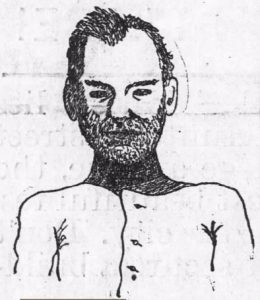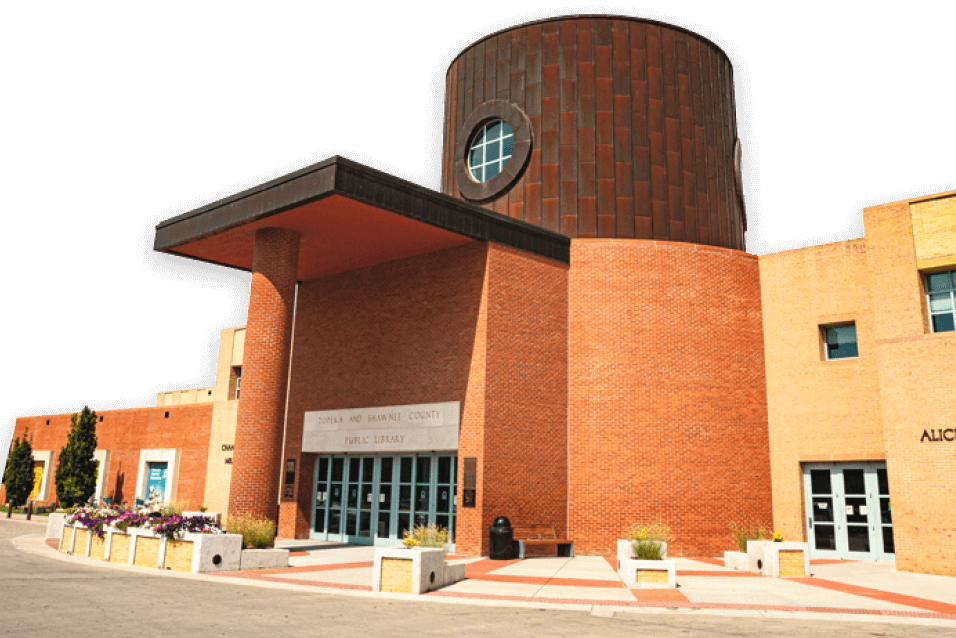Local History: The last illegal public hanging in Topeka (Part 2)
content
In the early morning hours of June 4, 1889, an intruder evades sight as he flees the scene of the assault he just committed at the residence of A.T. Rodgers. What began as a burglary quickly escalated into a violent struggle, eventually claiming the life of A.T. Rodgers himself. Within a matter of hours, the man was apprehended by law enforcement officers just outside of Tecumseh. It’s here that our story resumes. (Here's Part 1 if you missed it.)
The morning after the murder
After being capture

The identification
His efforts to manipulate her were unsuccessful, and Klinkerman retained her composure while looking him over. While she was almost convinced this was the same man, she requested the assistance of Mrs. Rodgers for confirmation. The two women positively identified the murderer, whose name would quickly spread throughout Topeka and the surrounding community. A nobody just one day before, 32 year old Nathaniel E. Oliphant managed to gain notoriety while simultaneously triggering rage and vengeance among an entire community.
Klinkerman retained her composure while looking him over. While she was almost convinced this was the same man, she requested the assistance of Mrs. Rodgers for confirmation. The two women positively identified the murderer, whose name would quickly spread throughout Topeka and the surrounding community. A nobody just one day before, 32 year old Nathaniel E. Oliphant managed to gain notoriety while simultaneously triggering rage and vengeance among an entire community.
Once Oliphant was identified, a throng of people began to gather outside the walls of his jail cell. This group consisted of some of Topeka’s most notable members, including doctors, lawyers, and preachers, who were perhaps not the typical people associated with a mob. According to the Daily Press, “Everybody knew everybody else, and all were determined.” Indeed they were determined, as the size of the crowd continued to spread over the afternoon hours.
Protests begin
Members of an already formed jury were also present to catch their first glimpse of the criminal. Capper’s Weekly described Oliphant’s appearance as “pale and haggard” and suggested he was already anticipating what was to come. Indeed, the crowd’s agitation increased, and people began openly threatening the prisoner with the words “hang him!” The hostility was reaching a boiling point.
In an attempt to placate them, County Attorney R.B. Welch addressed the crowd (which was reportedly 400 people and counting) from the steps of the county jail. Welch pleaded with his fellow Topekans to “Let us guard the fair fame of our city by maintaining the laws which we ourselves have made, and by supporting the officers whom we ourselves have chosen.”
pleaded with his fellow Topekans to “Let us guard the fair fame of our city by maintaining the laws which we ourselves have made, and by supporting the officers whom we ourselves have chosen.”
Though his words were genuine, they did not seem to have much of an effect on anyone. Additional attempts to quiet the crowd were made, including an official decree by Judge John Guthrie. However, even that failed to produce noticeable results.
It was around this same moment that Nat Oliphant finally confessed. He claimed the shooting was in self defense. Oliphant also stated that Rodgers’ home was the first dwelling he had ever attempted to burglarize. Oliphant was not from Topeka at all, but originated from Pike County, Indiana. It’s unknown how long he was in the sunflower state, but Oliphant informed one reporter, “Two days ago I came from Newton, Kansas, and while on the way fell in with two pals from Kansas City."
At some point he had been invited into the Rodgers’ home after going door-to-door in search of a warm meal. It’s assumed Oliphant decided to burglarize the home after seeing the Rodgers’ valuables. No one knew it at the time, but Oliphant had been charged previously with robbery in Nickerson, Kansas. He ended his confession with an apology to his “aged” mother and father.
Tensions continue to rise
By the evening hours, the size of the crowd-turned-mob was well over 10,000 people. According to the Topeka State Journal, “A solid mass of people blocked Fifth Street from Kansas avenue to Harrison Street.”
At approximately 8:30pm people began hurling rocks at the jail, breaking several windows in the process. By collectively forcing themselves closer to the jail, the crowd began to overpower officers who were guarding the entrances. Several of the guards were injured, including Chief of Police John W. Gardiner.

Crowd leaders didn't attempt to break down the doors of the jail, perhaps due to the armed guards who remained. Rather, they used their skills and tools (described as “long, heavy planks”) to remove large portions of the stone wall. People then began chiseling away using “picks, sledges and crowbars,” creating an opening large enough for one person to enter. Newspapers reported that “a similar work was accomplished at the west end of the cell room.”
It was alleged that between 100-200 men entered the jail in search of Oliphant’s cell, which proved to be more difficult than anticipated. After some time, the search party believed they had located the criminal. According to a Capper's Weekly newspaper, “When a lantern was held up to his face, he blew it out” and “denied he was the man they were after.”
However, thanks to the help of his fellow inmates, Oliphant was once more positively identified. The intruders gained access to his jail cell, threw a rope around him and forcefully removed Oliphant through one of the newly created holes.
A lowly telephone pole
Oliphant’s detainers hauled him down the street and up the steps of the First National Bank, then located on the north east corner of Sixth and Kansas Ave. The crowd watched as Oliphant, who was “covered with perspiration, dirt and blood” maintained a calm demeanor as he was dragged to his fate. A minister in the crowd made a desperate attempt to spare Oliphant by pleading for the man’s life. However, this only fueled the raging mob. The Topeka State Journal states that “a thousand shouts in chorus went up, drowning the voice of the minister…”
Oliphant meets his fate
Growing increasingly impatient, the alleged 40 men who were leading Oliphant could wait no longer. They tied a rope around his neck and brought him to a telephone pole at the nearest streetcorner. Oliphant was “struck in the face” by a crowd member in the process. He was then raised on the telephone pole and left to hang for 16 minutes. According to the Daily Capital, Oliphant's death occurred just 12 hours after Rodgers was murdered.
Once Oliphant’s body was removed, reports say it was secretly buried in Topeka Cemetery. Ironically, A.T. Rodgers was buried in the same cemetery, likely only a few days apart. The location of Oliphant’s internment got out, and his remains mysteriously disappeared approximately one week later. The grave robbers have never been identified. Human remains appeared at a later date at an unknown location, but they were never determined to be Oliphant’s.
What happened to Malvina?
Malvina Rodgers, wife of the slain A.T. Rodgers, made a full recovery from her injuries sustained during the attack. However, her tragedy did not end there. According to Topeka Cemetery Superintendent Lisa Sandmeyer, Malvina’s second husband, John Lord, took his own life in 1923. Sandmeyer went on to state that, “Both John and Malvina are buried with their first spouses.”
According to Historian John Ripley, “On her release from the hospital, Malvina Rodgers had no wish to return to the old home at Third and Fillmore.” At the time of Ripley’s writing, the Rodgers’ original home was still standing. That no longer seems to be the case, however, as the current home on the property was built in 1993.
Nat Oliphant's transgressions against A.T. Rodgers shook the community of Topeka. Recollections of the attack and hanging remained prominent in Topeka newspapers for weeks after the offenses took place. A few ministers in the city even based their sermons on the tragedy. While we may never know the true fate of Oliphant’s body, his misdeeds have joined the ranks of Topeka’s most notable 19th century crimes.
















